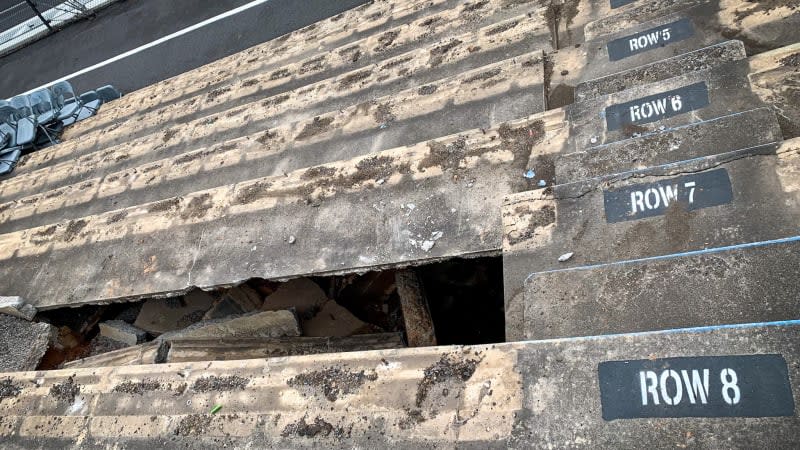North Wilkesboro Speedway finds a potential moonshine cave under its grandstands

In 1920, when the Volstead Act made getting a Friday-night buzz illegal, folks who blurred the line between entrepreneurs and criminals fought back by distilling bootleg liquor. Staying out of jail required keeping a low profile; moonshine reportedly got its name because it was usually made at night. The North Wilkesboro Speedway has found what could be a secret moonshine cave under its grandstands.
The discovery wasn't entirely unexpected: Track officials claim rumors of a moonshine cave located somewhere on the property have been part of the local folklore for years. It's how the cave was discovered that took everyone by surprise. Staff noticed cracks in the concrete of Section N while cleaning and inspecting the grandstands in March 2024. They removed the seats and found a 700-square-foot cave.
"We haven't found a still yet, but we've found a small cave and an interior wall that would have been the perfect location to not only make illegal liquor but to hide from the law as well. We don't know how people would have gotten in and out, but as we uncover more there's no telling what we might find," explained Steve Swift, the senior vice president of operations and development at Speedway Motorsports.
The facility opened in 1947 and became one of the original NASCAR tracks two years later. The 21st Amendment ended prohibition in December 1933, but bootlegging didn't stop with Prohibition. It was as risky as it was profitable, and the people who made a fortune selling moonshine during the 1920s had a difficult time pivoting back to a legal way of making a living; you can't really put "1920-1933: Bootlegger" on a résumé when you're applying for a job in a department store. Besides, some counties stayed dry, and legal alcohol was heavily taxed.

 Yahoo Autos
Yahoo Autos 
